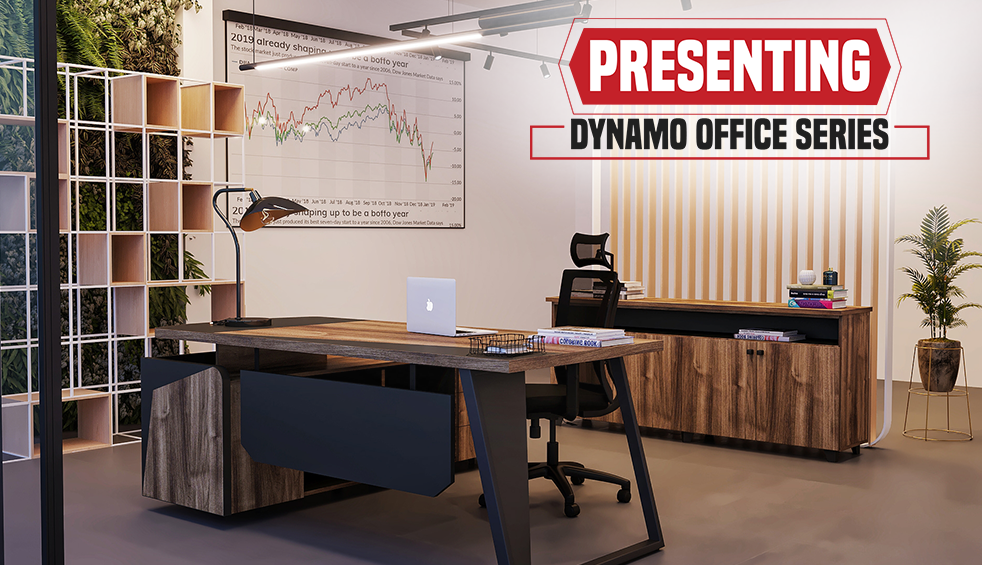In today’s environmentally conscious world, sustainability and eco-friendliness are becoming increasingly important factors in various industries, including furniture manufacturing. As businesses seek to reduce their carbon footprint and make responsible choices, the demand for sustainable commercial furniture is on the rise. In this article, we will explore the key features and practices that make commercial furniture sustainable and eco-friendly, allowing businesses to create an eco-conscious workspace without compromising on style or functionality. Profine provides Office furniture delivery Pakistan.
Looking for: Sustainable Executive desks Pakistan
1. The Rise of Sustainable Commercial Furniture
With growing concerns about climate change and the depletion of natural resources, the furniture industry has seen a significant shift towards sustainability. Sustainable commercial furniture focuses on minimizing environmental impact throughout its lifecycle, from sourcing materials to production, use, and disposal.
2. Sustainable Materials in Commercial Furniture
2.1. Recycled Materials
One of the essential aspects of sustainable commercial furniture is the use of recycled materials. These materials are sourced from post-consumer waste or reclaimed wood and metal, reducing the need for virgin resources and diverting waste from landfills.
2.2. FSC-Certified Wood
Sustainable commercial furniture often uses wood certified by the Forest Stewardship Council (FSC). FSC certification ensures that the wood comes from responsibly managed forests, promoting biodiversity and protecting indigenous communities.
2.3. Bamboo
Bamboo has gained popularity in sustainable furniture due to its rapid growth and renewability. It is a fast-growing grass that requires minimal water and no pesticides, making it an eco-friendly alternative to traditional hardwood.
3. Eco-Friendly Manufacturing Practices
3.1. Energy Efficiency
Sustainable commercial furniture manufacturers prioritize energy-efficient production processes. They may use renewable energy sources, implement energy-saving technologies, and optimize resource consumption to reduce their carbon footprint.
3.2. Low VOC Emissions
Volatile Organic Compounds (VOCs) are harmful chemicals that can off-gas from furniture and negatively impact indoor air quality. Eco-friendly manufacturers use low VOC adhesives and finishes, promoting healthier work environments.
3.3. Waste Reduction and Recycling
Sustainable manufacturers aim to minimize waste by recycling production by-products and optimizing material usage. They may also offer recycling programs for end-of-life furniture to extend the product’s lifecycle.
4. Durability and Longevity
Sustainable commercial furniture is built to last. High-quality materials and superior craftsmanship ensure that the furniture remains functional and aesthetically pleasing for an extended period, reducing the need for frequent replacements.
5. The Benefits of Sustainable Commercial Furniture
5.1. Positive Environmental Impact
By choosing sustainable commercial furniture, businesses contribute to reducing deforestation, waste generation, and greenhouse gas emissions, promoting a greener planet.
5.2. Corporate Social Responsibility
Investing in eco-friendly furniture aligns with a company’s corporate social responsibility (CSR) goals. It showcases a commitment to sustainability, which can enhance a brand’s reputation and attract environmentally conscious customers and partners.
5.3. Cost Savings in the Long Run
While eco-friendly commercial furniture may have a higher upfront cost, its durability and longevity lead to cost savings over time, as fewer replacements are needed.
6. Certifications for Sustainable Commercial Furniture
6.1. BIFMA e3 Level Certification
The Business and Institutional Furniture Manufacturers Association (BIFMA) e3 Level certification assesses furniture’s environmental and social impacts, ensuring adherence to sustainable practices.
6.2. GREENGUARD Certification
Furniture with GREENGUARD certification meets strict indoor air quality standards, contributing to a healthier workspace environment.
6.3. Cradle to Cradle Certification
The Cradle to Cradle Certified™ program evaluates products based on their material health, recyclability, and use of renewable energy, among other factors.
7. Incorporating Sustainability into Office Design
Creating a sustainable workspace involves more than just choosing eco-friendly furniture. Businesses can take additional steps to enhance sustainability:
7.1. Energy-Efficient Lighting
Opt for LED or energy-efficient lighting solutions to reduce electricity consumption.
7.2. Indoor Plants
Integrate indoor plants into the office space to improve air quality and add a touch of nature.
7.3. Waste Recycling Program
Implement a comprehensive waste recycling program to encourage employees to recycle paper, plastic, and other recyclable materials.
8. Conclusion
As the world becomes increasingly environmentally conscious, sustainableand eco-friendly practices are gaining prominence in the furniture industry. When it comes to commercial furniture, choosing sustainable options not only benefits the environment but also aligns with a company’s values and cost-saving goals. By considering the materials, manufacturing practices, and certifications, businesses can create a sustainable and stylish workspace that reflects their commitment to a greener future.
FAQs
1. Is sustainable commercial furniture more expensive than conventional options?
While sustainable commercial furniture may have a slightly higher upfront cost, its long-term durability often leads to cost savings by reducing the need for frequent replacements.
2. Are there design limitations with commercial furniture?
No, sustainable furniture offers a wide range of design options, from sleek and modern to classic and traditional, allowing businesses to find pieces that match their aesthetic preferences.
3. Can commercial furniture be customized to fit specific office needs?
Yes, many sustainable furniture manufacturers offer customization options to meet the unique requirements of different businesses and office spaces.
4. How do I ensure that the sustainable furniture I purchase meets eco-friendly standards?
Look for reputable certifications like BIFMA e3 Level, GREENGUARD, or Cradle to Cradle to ensure that the furniture meets stringent eco-friendly standards.
5. Does commercial furniture come with warranties?
Yes, most sustainable furniture manufacturers provide warranties to guarantee the quality and longevity of their products. Be sure to inquire about warranty coverage before making a purchase.




